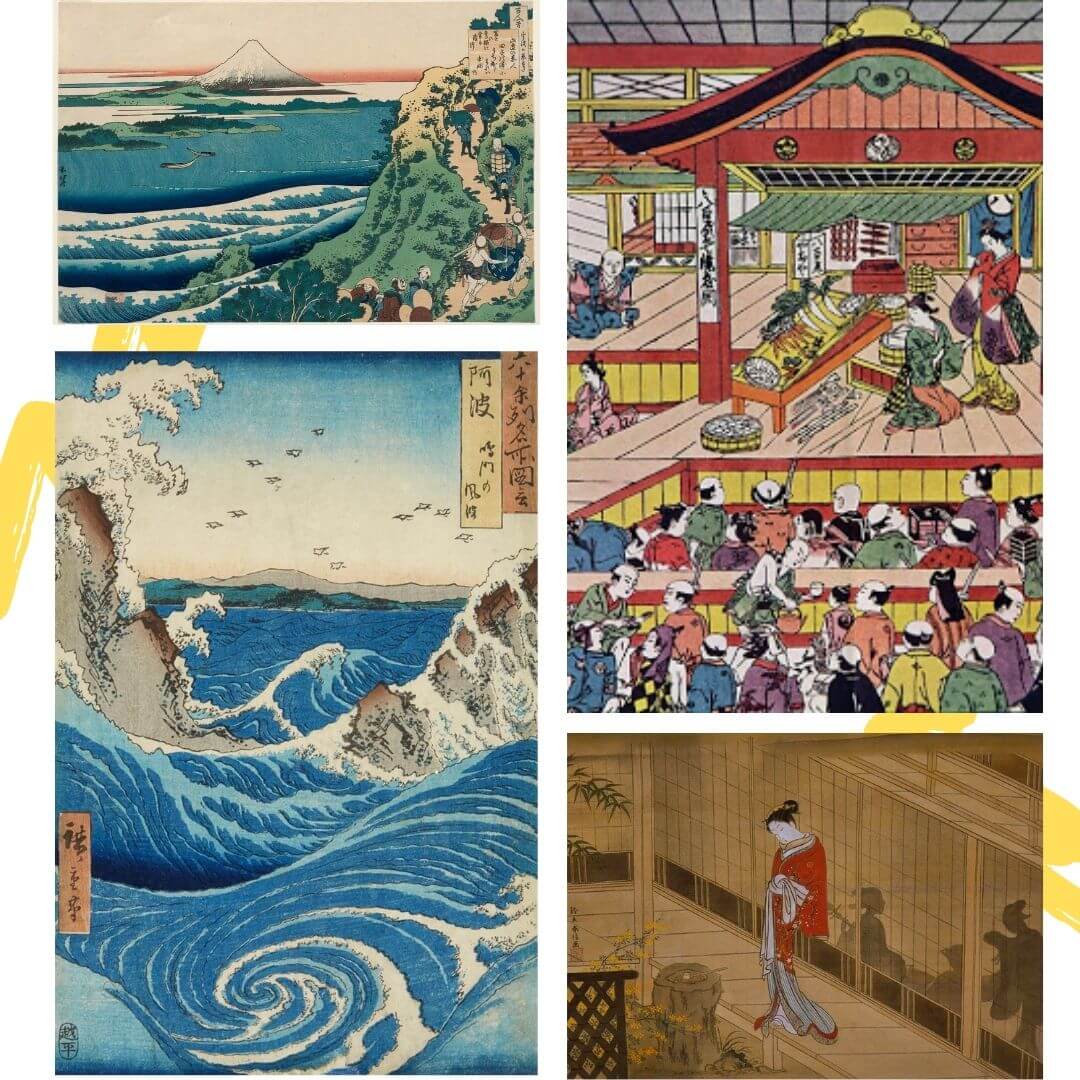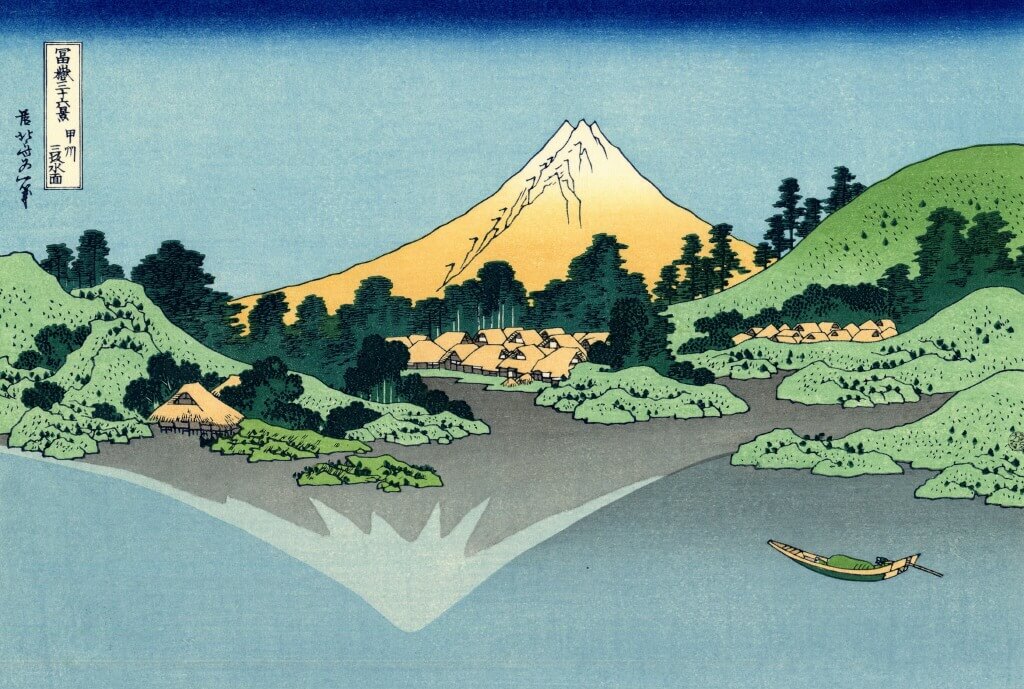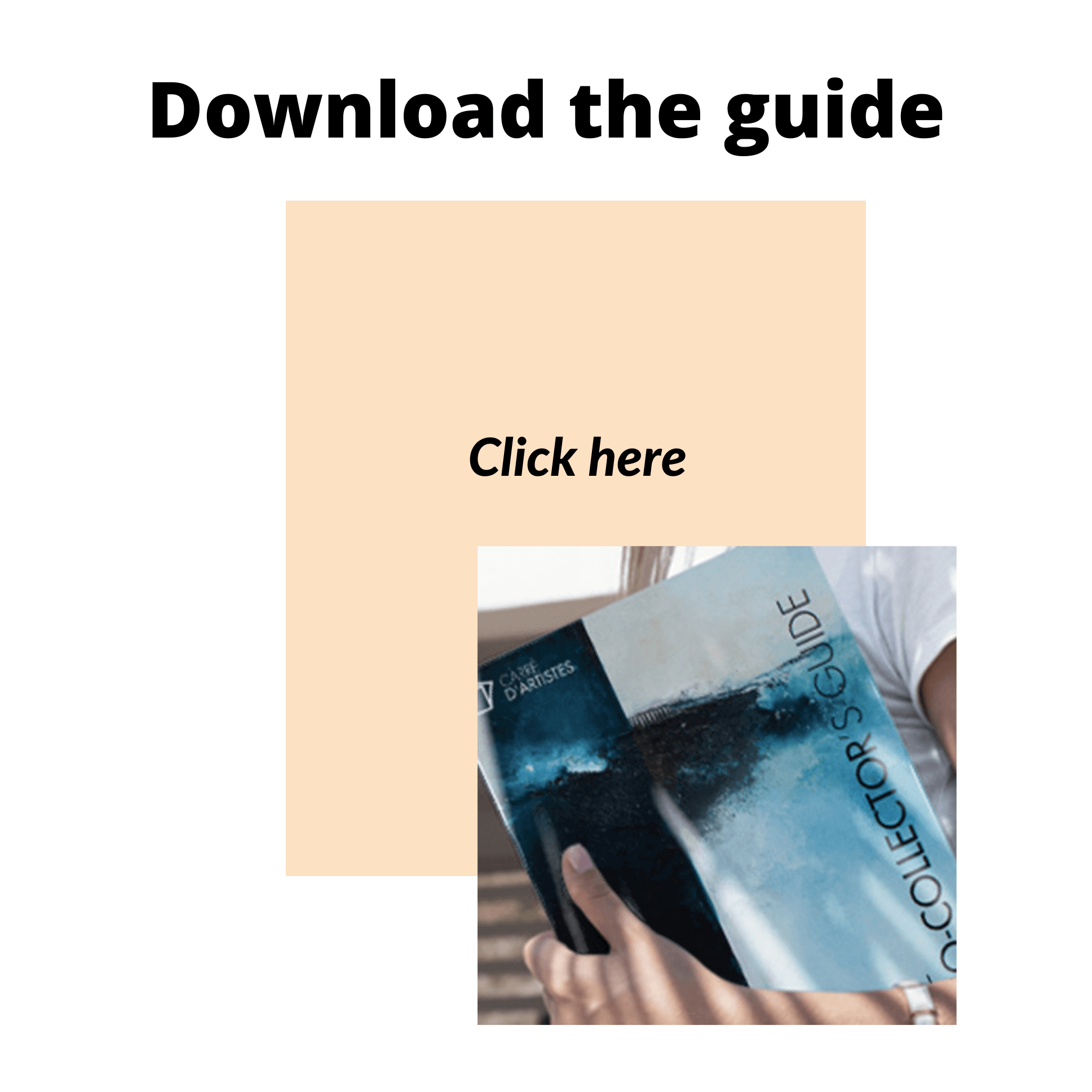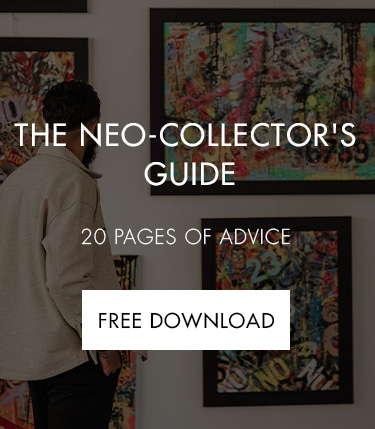The art minute
Ukiyo-e : the art of japanese stamps
- 14/05/2021
Originally, the Japanese name of stamps, ukiyo-e (???) which literally means "pictures of the floating world", had a pejorative meaning.
From Buddhist, ukiyo evokes the transience of life, a sad world, floating, where nothing is constant, nor palpable.
It was during the Edo period that the meaning changed.
This period, that runs from 1603 to 1868, also called "Tokugawa period", marks the takeover of the Tokugawa dynasty, that chose the city of Edo (now Tokyo) for capital to move away from the imperial capital, Kyoto.
Asai Ryoi (1612 ? - 1691) was the first writer to evoke ukiyo in an epicurean way in 1661 in the preface of Ukiyo monogatari (floating world):
"To live only for the moment, contemplate the moon, the snow , the cherry blossoms and the leaves of maple trees glowing, love, wine, women and song, do not worry about poverty, just go with the flow of life as the gourd floats over the water, this is what I call ukiyo".
This is the ukiyo expression, that we add « e » which means drawing or painting.
From Buddhist, ukiyo evokes the transience of life, a sad world, floating, where nothing is constant, nor palpable.
It was during the Edo period that the meaning changed.
This period, that runs from 1603 to 1868, also called "Tokugawa period", marks the takeover of the Tokugawa dynasty, that chose the city of Edo (now Tokyo) for capital to move away from the imperial capital, Kyoto.
Asai Ryoi (1612 ? - 1691) was the first writer to evoke ukiyo in an epicurean way in 1661 in the preface of Ukiyo monogatari (floating world):
"To live only for the moment, contemplate the moon, the snow , the cherry blossoms and the leaves of maple trees glowing, love, wine, women and song, do not worry about poverty, just go with the flow of life as the gourd floats over the water, this is what I call ukiyo".
This is the ukiyo expression, that we add « e » which means drawing or painting.
A SOCIETY IN TURMOIL
At his arrival in 1603, the shogun Ieyasu Tokugawa (1543-1616) established the bakufu (military government) and isolates Japan from the outside world by blocking all exchanges (human and material) both incoming and outgoing.
A caste system is set up with four very different classes:
the Daimyo (lords), the samurai (warriors), the farmers and the merchants.
The Daimyo are then forced by the regime from 1635 to stay in Edo at least one year out of two and their purchasing power makes them wealthy and privileged customers for merchants who enrich themselves.
It is, from this virtuous circle, that Japanese society is rapidly developing and urban entertainment, also with literature, theater and the arts are following next.
A caste system is set up with four very different classes:
the Daimyo (lords), the samurai (warriors), the farmers and the merchants.
The Daimyo are then forced by the regime from 1635 to stay in Edo at least one year out of two and their purchasing power makes them wealthy and privileged customers for merchants who enrich themselves.
It is, from this virtuous circle, that Japanese society is rapidly developing and urban entertainment, also with literature, theater and the arts are following next.

In Edo, two districts are cultural locomotives:
the pleasure district of Yoshiwara and the theater district.
To attract the eyes and the full pockets, merchants and owners of theaters then use the stamps as advertising media.
This very cheap media, which can also serve as a memento of entertainment, then diffuses rapidly.
The favorite themes of the ukiyo-e are then the scenes of life in these neighborhoods, with theater actors and courtesans.
the pleasure district of Yoshiwara and the theater district.
To attract the eyes and the full pockets, merchants and owners of theaters then use the stamps as advertising media.
This very cheap media, which can also serve as a memento of entertainment, then diffuses rapidly.
The favorite themes of the ukiyo-e are then the scenes of life in these neighborhoods, with theater actors and courtesans.
UNCHANGED TECHNICAL BUT DIFFERENT REPRESENTATIONS
If, in the VIIIth century, the earliest stamps were intended for religious subjects, the change of context and inspirations will not move the technique at all.
This ancient method from China is a collective work that requires the presence of four people:
an editor who coordinates the work, an artist who makes the drawing with China ink, an engraver that applies the design on a wooden board and a printer that completes the draw.
Different subjects and even different artistic currents have succeeded on the cherry wood of ukiyo-e.
This ancient method from China is a collective work that requires the presence of four people:
an editor who coordinates the work, an artist who makes the drawing with China ink, an engraver that applies the design on a wooden board and a printer that completes the draw.
Different subjects and even different artistic currents have succeeded on the cherry wood of ukiyo-e.

Scenes of kabuki (theatrical genre) with the School of Torii masters, to simple portraits of courtesans, beautiful women, Sumos or actors, stamps went through different styles.
In full censorship, the trend has shifted to the representation of landscapes with masters such as Katsushika Hokusai (1760-1849) or Utagawa Hiroshige (1797-1858) to the Shinto spiritual matters.
The ukiyo-e do not aim first to represent reality, but to image the emotions of the actors or the beauty of landscapes for example.
In 1858, Japan opens to the world by American constraint and the stamps are going through the sea to get under the eyes of European painters.
Greatly inspired by sacred landscapes, impressionist painters, in period of full release, are then imposing themselves in Europe.
In full censorship, the trend has shifted to the representation of landscapes with masters such as Katsushika Hokusai (1760-1849) or Utagawa Hiroshige (1797-1858) to the Shinto spiritual matters.
The ukiyo-e do not aim first to represent reality, but to image the emotions of the actors or the beauty of landscapes for example.
In 1858, Japan opens to the world by American constraint and the stamps are going through the sea to get under the eyes of European painters.
Greatly inspired by sacred landscapes, impressionist painters, in period of full release, are then imposing themselves in Europe.
OLIVIER ANICET, ARTIST OF THE WEEK
Olivier Anicet, is fascinated by several art movements such as abstract Art, African Art and Japanese stamps and engraving.
Olivier Anicet mainly uses oil paint, pastel, marouflage and collage.
His travels (Europe, USA, Mexico) influence him in his creation and in his use of color.
He paints colorful cityscapes and scenes of daily life.
The artist's approach is all about surprise.
His paintings reflect his inner self that combines different spaces of creativity, of reserve, of self-research or of his understanding of the world around him.
His creations become his force of expression and language.
Olivier Anicet mainly uses oil paint, pastel, marouflage and collage.
His travels (Europe, USA, Mexico) influence him in his creation and in his use of color.
He paints colorful cityscapes and scenes of daily life.
The artist's approach is all about surprise.
His paintings reflect his inner self that combines different spaces of creativity, of reserve, of self-research or of his understanding of the world around him.
His creations become his force of expression and language.
THE NEO-COLLECTOR'S GUIDE
Everything you always wanted to know about the art market but were afraid to ask!
The art market often appears to be a domain reserved for a privileged few...
This is not true: accessible to all, the art market is only waiting for its new collectors.
For those who still have a doubt :
Here are the answers to the questions commonly asked!
What is a work of art?
What is the purpose of art?
What is the purpose of a certificate of authenticity?
What should you look out for when buying a work of art?
WANT TO LEARN MORE ABOUT THE ARTISTS AND THEIR ARTWORKS ?
Subscribe to our newsletter to receive our latest articles and news!










.png)




